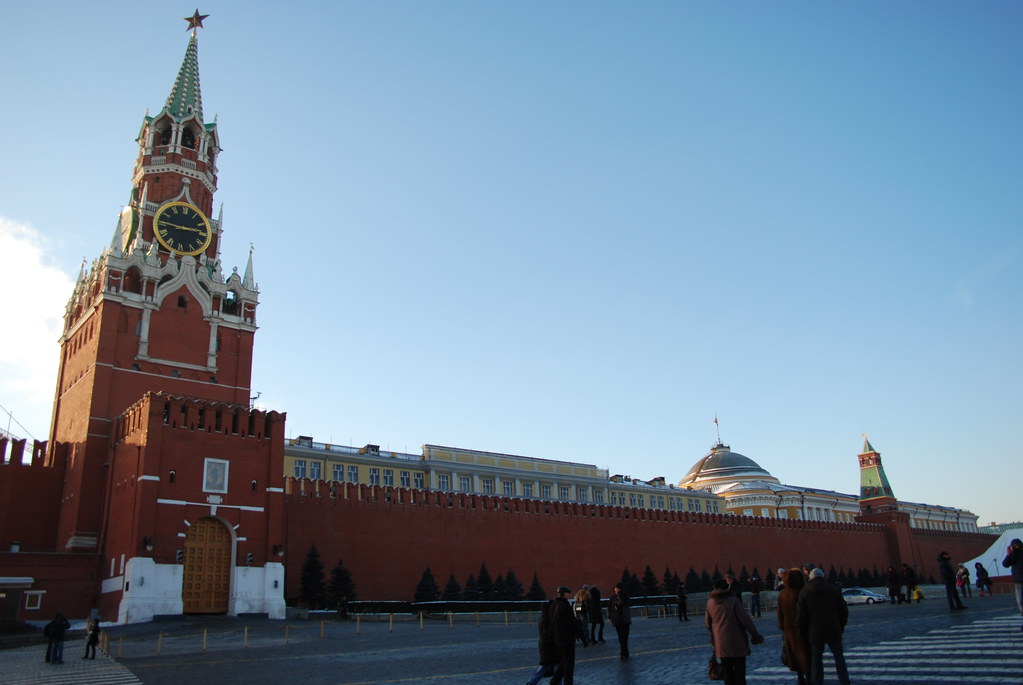
In August of 2020, Aleksei Navalny was poisoned. Navalny blames the Kremlin for the attempt on his life, as he has been the most prominent face of opposition to President Vladimir Putin. Now, after Navalny was detained upon his return to Russia Jan. 17, Russia is alight in protests.
Navalny and the Kremlin have a turbulent history. Navalny is an anti-corruption campaigner. Over the years, he has released scores of information and reports exposing Putin’s corruption in Russia. He’s been convicted on criminal charges of embezzlement and fraud, claiming the convictions were politically motivated. Navalny had planned to run against Putin in 2018, but the convictions prevented him from doing so. The larger convictions are surrounded by smaller charges for protests. While the Kremlin despises the face of their opposition, the public largely supports Navalny with millions of young Russians following him on social media.
However, not everyone supports Navalny’s claims and evidence of a corrupted Russia as he has been targeted with zelyonka, an antiseptic green dye, which caused Navalny chemical burns to the eyes. When serving a jail sentence in 2019, he was diagnosed with contact dermatitis, and his doctor suggested he had been exposed to a toxic agent.
While Navalny has been a prominent figure in Russia for years, his name first started circulating to a wider audience when he was poisoned in 2020. He was flying back to Moscow from Siberia and had breakfast at the airport: a cup of tea. Shortly into the flight, his plane made an emergency landing in Omsk, and he was promptly hospitalized.
After being transported to Berlin still in critical condition, Navalny started to recover, remaining in Germany for five months. Navalny and his team, as well as the German officials responsible for harboring Navalny, claimed that the Kremlin was behind the poisoning, an accusation that has been repeatedly denied.
The German military scientists determined that Navalny was poisoned with a Novichok nerve agent that could only have been produced in a highly secure laboratory. Details about how Navalny was poisoned are still uncertain, but it has been suggested that Navalny ingested the substance before his flight, most likely in his morning tea.
While he recovered in Germany, Navalny’s name fell off the map until Jan. 17 when he returned to Russia. He always intended to return. Making good on those intentions, he was promptly arrested at the airport after his arrival.
He was detained due to the term violations of his 2014 money-laundering conviction, although Navalny claims that conviction was illegitimate. He was sentenced to 30 days to await his trial. The trial in early February resulted in Navalny receiving a 2 year, 8-month sentence.
Navalny’s airport arrest took place under the eyes of his supporters, who had been awaiting his arrival, and their cell phone cameras. Since his arrest, protesters have taken to the streets. The rallies and protests have been nationwide, and thousands of people using Navalny as their symbol to combat Russian corruption. Since 2014, demonstrations without authority permission have been punishable by fines or detainment, but that knowledge isn’t stopping the Navalny protesters.
The protesters want change. Ivan, a protester in Yakutsk stated, “I am tired of the despotism and lawlessness of authorities. No questions have been answered. I want clarity, openness, and change. This is what made me come here.”
“I understand that I live in a totally lawless state. In a police state, with no independent courts. In a country ruled by corruption. I would like to live differently,” stated another protester in Moscow.
The chants at the protests ring out as the demonstrators meet lines of police decked out in riot gear. Thousands of protesters have been detained, some days seeing up to 5,000 new detainees. But the protesters haven’t stopped coming.
The Kremlin has been cracking down. With the Navalny protests being widespread enough to span Russia’s 11 time zones, the Kremlin has had to use all of its best tactics. The government is using COVID-19 to claim demonstration restrictions while also relying on the previously placed laws against sanctioned rallies. Navalny’s team has been directly targeted.
As a result, Navalny’s brother and several other key allies have been put under house arrest with no internet access, so as to not be able to organize any more demonstrations. Navalny’s other team members have been facing arrest. Police tactics have also been implemented with a lockdown of Moscow’s city center and the use of cordons to break protesters into smaller groups.
The treatment of the protesters has become increasingly brutal, with police beating and tasing protesters. Intimidations and threats have also been used to try and discourage people from gathering. The mass detainments of protesters, to the point where detention facilities ran out of space, were also attempts at quelling the protests.
While Navalny’s allies put a pause on the street protests after the mass detainments, supporters held candle-lit gatherings on Valentine’s Day. They used their mobile phones as torches and arranged candles in the shape of a heart. The gatherings were small, but social media was flooded with pictures and the hashtag “#loveisstrongerthanfear” in Russian.
